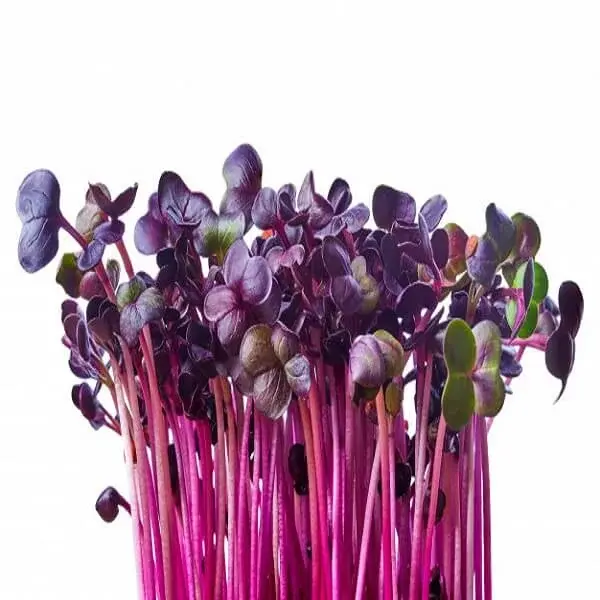The Superfood Revolution: Exploring Microgreens and Their Role in the Indian Diet
- mikrogrens

- Jul 20
- 4 min read

Microgreens have emerged as a game changer in the health and culinary scenes. These tiny greens, harvested at an early growth stage of vegetables and herbs, are not just a garnish. They are packed with nutrients that can transform your plate. As their popularity surges in urban India, it’s essential to explore why microgreens are celebrated as superfoods and how they seamlessly integrate into everyday Indian cooking.
What Are Microgreens?
Microgreens are young seedlings of edible veggies and herbs that are harvested soon after the first true leaves appear. They typically stand 1-3 inches tall and showcase a variety of flavors, colors, and textures. Common microgreens include arugula, radish, basil, and coriander.
Unlike sprouts, which are germinated seeds eaten raw, microgreens are grown in soil or a growth medium and are harvested just above the soil level. This method allows them to fully develop their unique flavors and nutritional profiles.
Why Are Microgreens Considered a Superfood?
Nutrient-Rich Powerhouses
Microgreens are loaded with vitamins, minerals, and antioxidants. Research indicates that they can have up to 40 times more nutrients by weight compared to mature plants. For example, a common microgreen like broccoli can contain 50% more vitamin C than its mature counterpart. This concentration makes microgreens an efficient way to boost your nutrient intake quickly.
Microgreens such as kale and peas are also abundant in essential vitamins A, C, E, and K, along with minerals like calcium, iron, and magnesium. This means that adding just a small amount of microgreens to your meal can significantly enhance its nutritional value.
Antioxidant Benefits
Microgreens are particularly rich in antioxidants, which are crucial for combating oxidative stress. Free radicals can cause cellular damage, leading to illnesses such as heart disease and cancer. Antioxidants not only support your immune system but also promote overall well-being. Incorporating microgreens into your diet may help reduce inflammation and promote heart health.
Supporting Digestive Health
Adding microgreens to your meals can bolster digestive health. The dietary fiber in various microgreens helps promote healthy digestion and prevents constipation. This aligns perfectly with traditional Indian dietary practices, which often emphasize fiber-rich foods for a balanced diet.
The Role of Microgreens in the Indian Diet
A Perfect Fit for Traditional Dishes
Microgreens are versatile ingredients that can elevate many traditional Indian dishes. For example, stirring in a handful of microgreens to dal or adding them to mixed vegetable curries doubles the flavor and nutrition. They also make excellent toppings for parathas or refreshing salads, providing a satisfying crunch.
Culinary Creativity
Microgreens encourage culinary exploration. Chefs and home cooks can experiment with different varieties to enhance Indian recipes. For example, mustard microgreens add a zesty kick, while basil microgreens infuse a hint of sweetness. This adaptability breathes new life into classic recipes and encourages healthier eating habits.
Quick and Easy Meal Prep
In today's fast-paced world, microgreens simplify meal prep without sacrificing nutrition. They require minimal cooking, allowing for quick meal assembly. In just minutes, you can whip up a nutrient-packed salad or flavorful sandwich by adding a handful of microgreens.
How to Use Microgreens in Indian Cooking
In Salads and Chaat
Microgreens enhance salads and popular chaat dishes. Tossing them into a bowl of bhel puri or a crisp kachumber adds both crunch and color. Their vibrant appearance makes dishes more visually appealing and appetizing.
In Curries and Stir-Fries
You can use flavorful microgreens as a garnish in curries or mix them into stir-fries. They can replace traditional leafy greens, increasing the nutrient content of your meals. A small handful of radish microgreens can add vitality to your vegetable stir-fry, making it both delicious and nutritious.
As a Healthy Snack
Microgreens are a great healthy snack option. Incorporating them into a smoothie can serve as a nutritious breakfast or an afternoon pick-me-up. Additionally, blending microgreens into chutneys creates a vibrant and healthy condiment to accompany your meals.
Are Microgreens Safe for Kids?
Parents often wonder about the safety of microgreens for children. Generally, they are safe, provided they are grown in clean conditions. Microgreens are an excellent way to enhance children's nutrition, offering essential vitamins and minerals that support growth and development.
Growing Your Own Microgreens
Easy to Grow at Home
One of the best things about microgreens is how easy they are to grow. They require minimal space and can thrive on windowsills or balconies. Just gather a shallow container, soil, seeds, and water, and you’ll be ready to start. In about 7 to 14 days, you can harvest your own fresh microgreens.
Sustainable Nutrition
Growing microgreens promotes sustainability, as they require less land and water compared to traditional farming. This makes them an environmentally friendly choice for conscious consumers. With their short growth cycle, microgreens also help reduce food waste.
Embracing the Microgreen Movement
Microgreens embody progress in nutrition and culinary creativity, particularly within the Indian diet. With their impressive nutrient profiles, versatility, and ease of growth, they are a superfood worth adding to your meals. As healthier eating habits gain traction, microgreens offer a simple yet impactful way to enhance traditional Indian cuisine.
Incorporating these tiny greens into your daily diet not only boosts flavor but also supports overall health and wellness. Whether you are a passionate home cook or a busy professional, give microgreens a try and experience the benefits they bring to both taste and nutrition.



















Comments